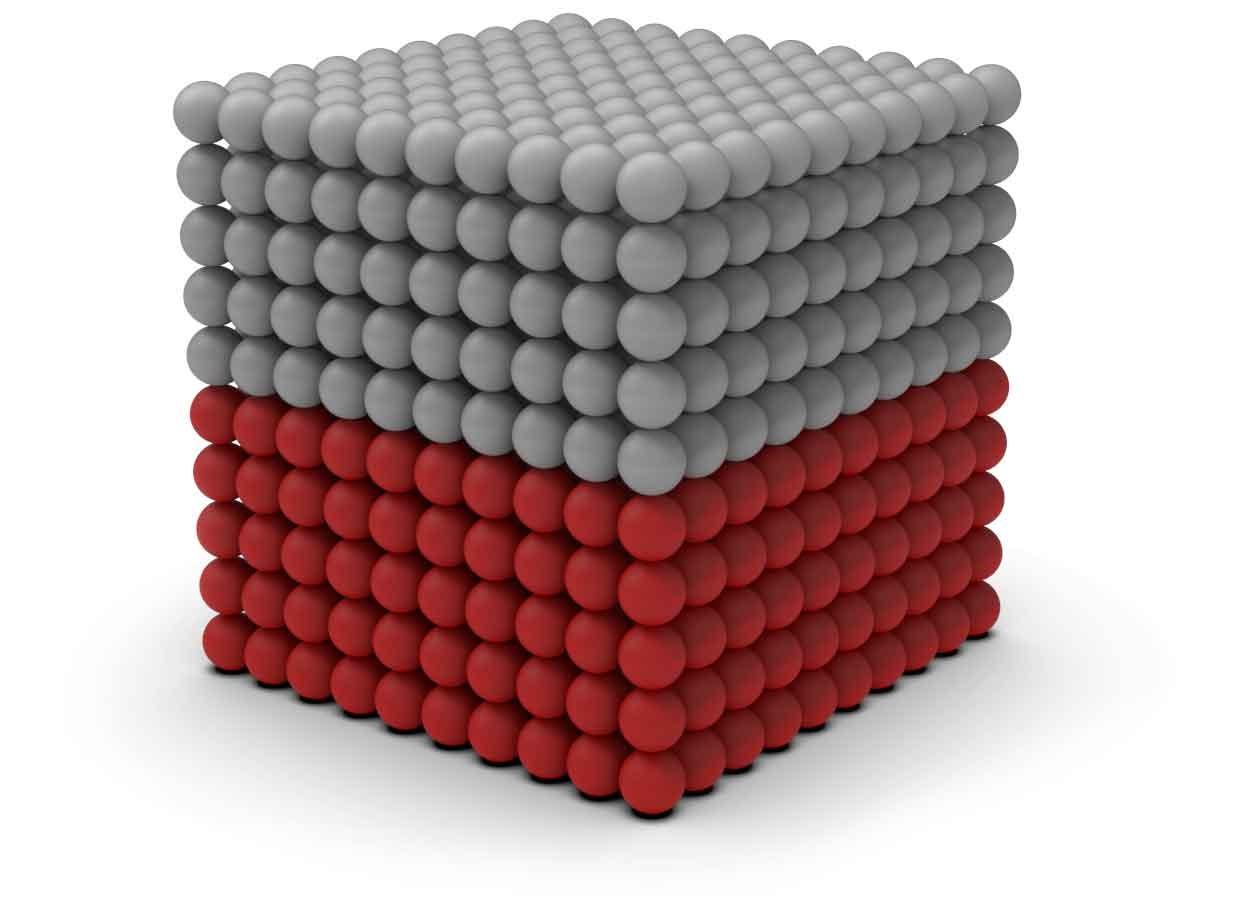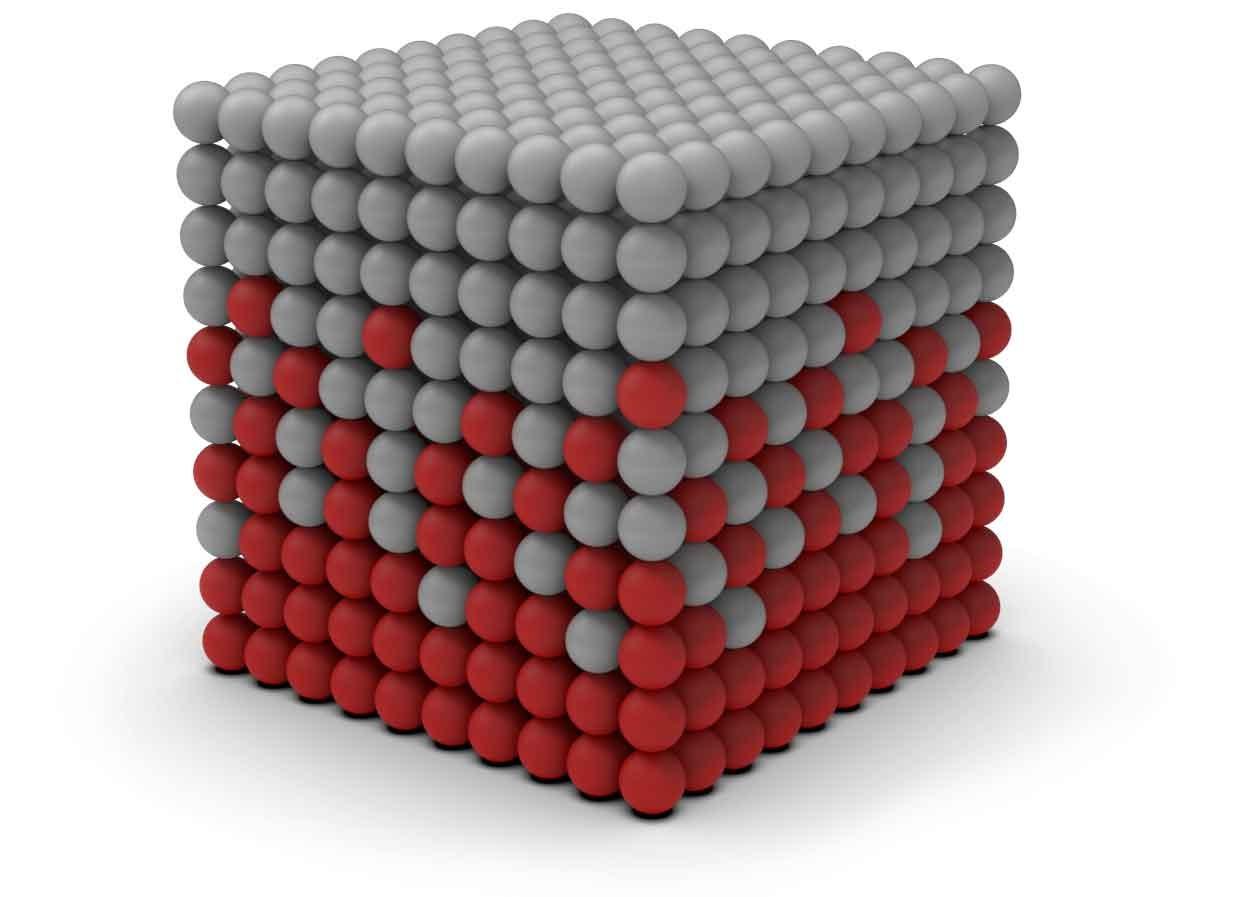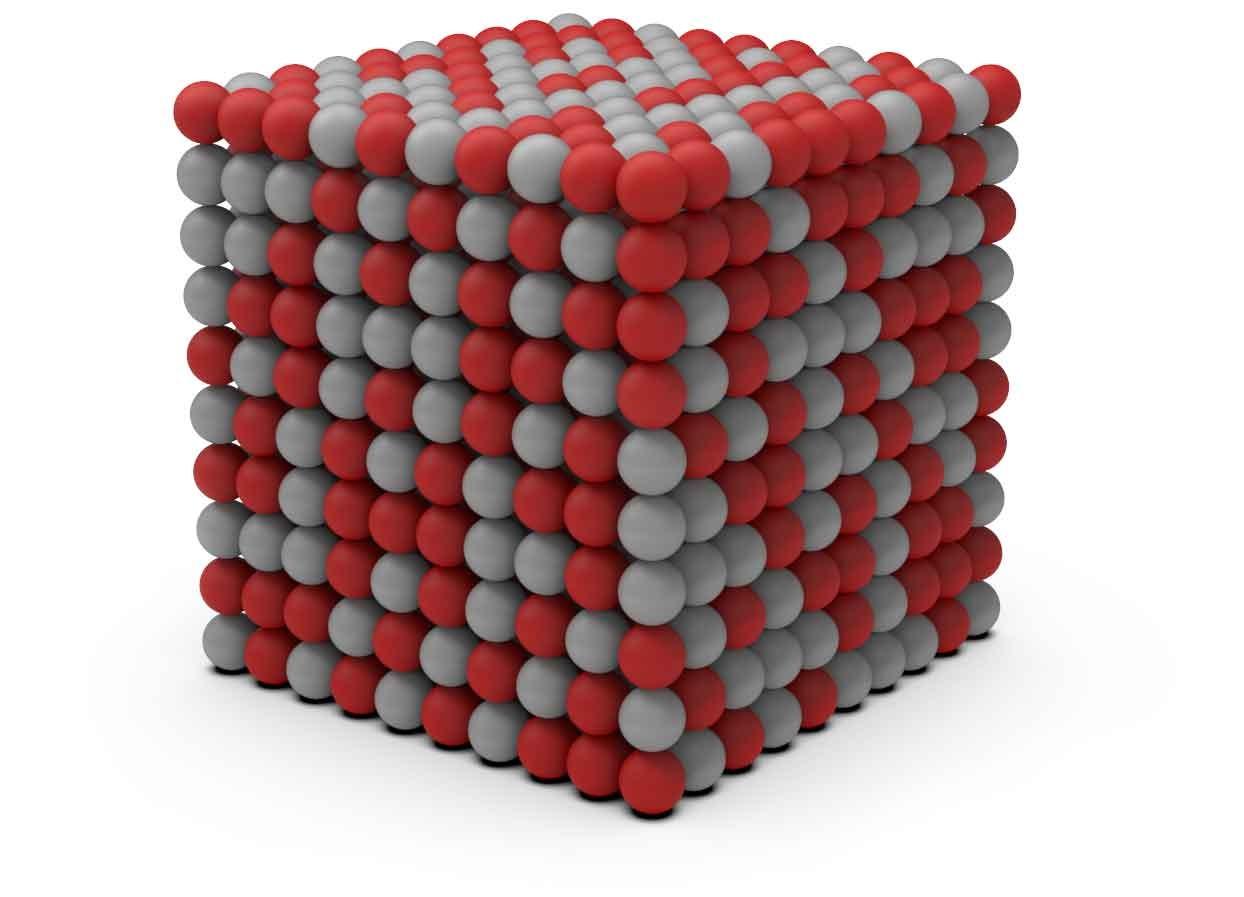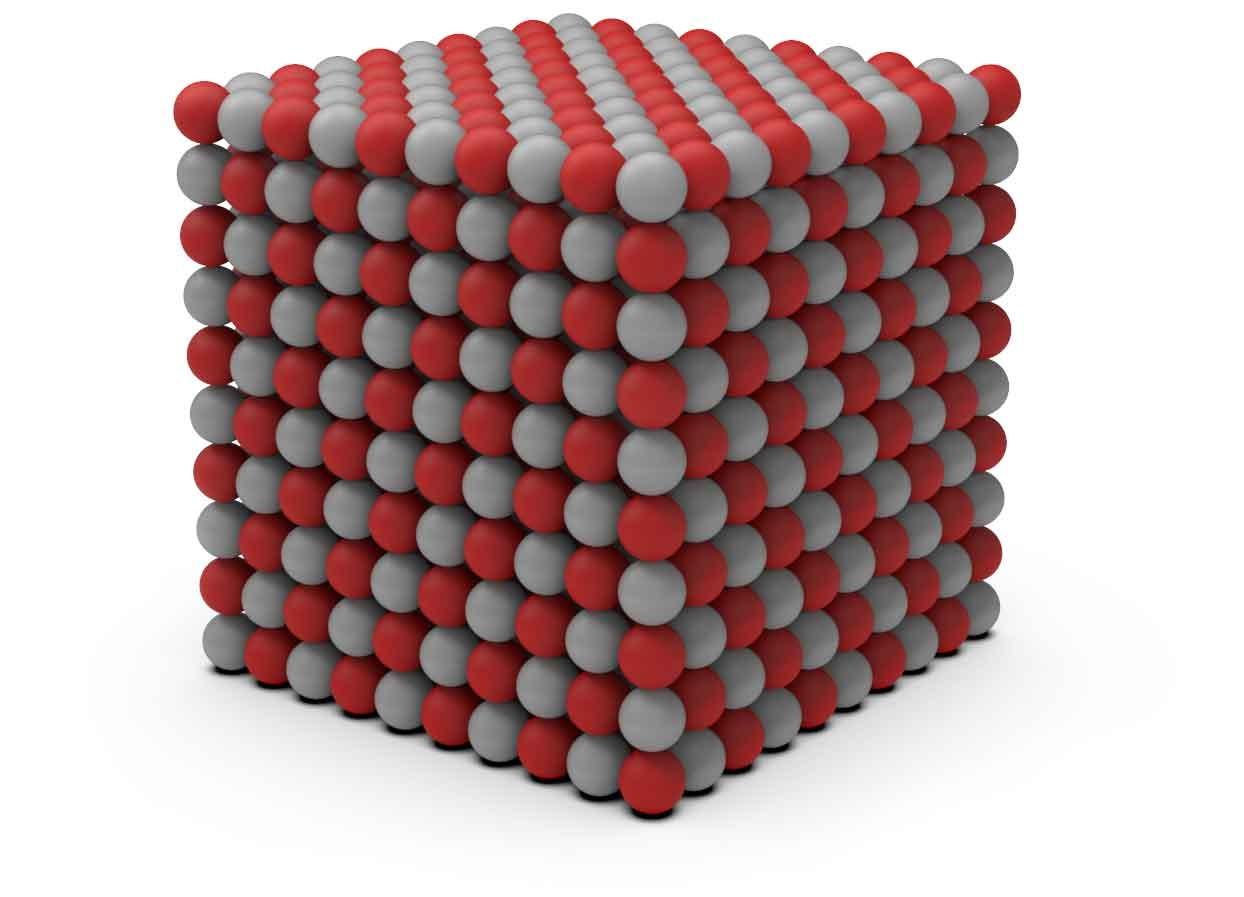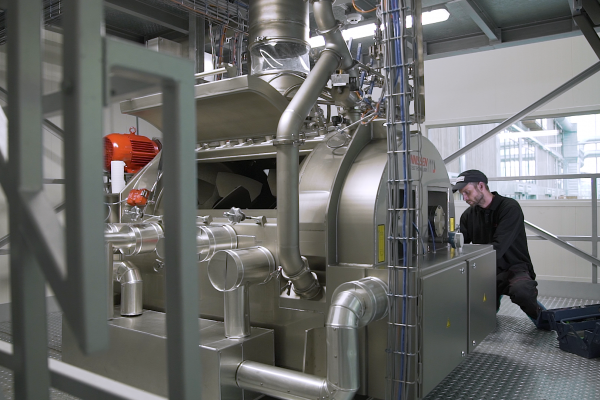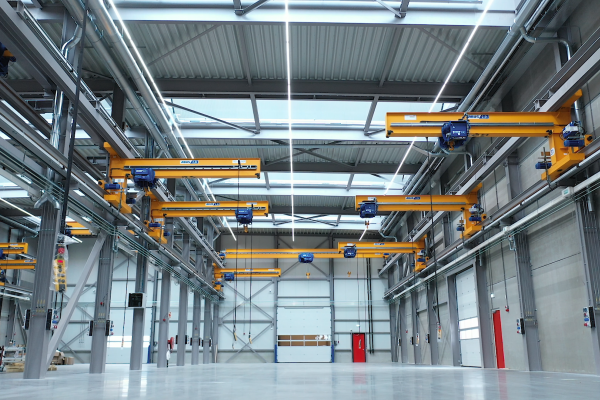Segregation is a major problem for the powder processing industry.
- A definition of the concept of segregation of a powder mixture
- The internal and external factors influencing segregation
- The main segregation mechanisms
- The methods of avoiding segregation
The experts at Dinnissen Process Technology are available to answer all your questions:
Get in touch with Juul Jenneskens 077 467 3555
Definition of segregation
Segregation, also called segregation, is the mechanism that separates the grains of the mixture from the other components in the mixture. It is a major problem for the powder processing industry
Internal factors influencing segregation
The causes of segregation can be very different, but it occurs in particular when different powder particles in a mixture have different mobility. Differences in mobility arise due to the physical properties of the particles. First of all, the size of the powder particles is decisive, but the shape, density and surface structure of the powder particles also influence the mobility of the powder particles.
External factors influencing segregation
There are also several external factors that influence segregation. Think of gravity, vibrations or shear stresses. This occurs in the machines and processes that produce, process and store powders. All these external influences can trigger segregation. This must be taken into account when designing an installation.
It is often the case that it is not the mixing, but the processing steps after the mixing that cause the most segregation problems. Pneumatic transport or transport by truck, emptying and filling of the batches from the mixer to storage or further processing are examples of process steps that can initiate segregation. This can result in a non-homogeneous powder mixture.
Segregation in dry powder and granular mixtures can also occur after factory operations. This includes storage in the warehouse involving transport movements, transport to the customer, handling and further processing at the customer or finally during consumption and / or use of the product.
In short, all these possibilities must be taken into account when developing new dry powder mixtures.
Segregation can be a major reason that the quality of a powder mixture produced is lost
Methods to avoid segregation
A number of measures are possible to prevent or reduce segregation:
- Changing the properties of product particles,
- The structure of processes or process sequence,
- The design of the installation.
When changing the properties of product particles, the first question is whether these properties can be changed or whether they are essential for the desired product properties. If changes are allowed, the cohesion between particles can be increased by reducing or wetting them. Also reducing the differences between the particles can reduce segregation. This includes changing the recipe or reducing or agglomerating fractions that are used in the mixture.
The design of processes or process sequence can prevent segregation. By taking a critical look at the process, there may be possibilities for mixing as late as possible in the process. In addition, it is also possible to homogenize the product by means of an intermediate step before it is further processed. In addition, it is important to minimize intermediate storage and transport after mixing and, if possible, work more batchwise
Finally, the plant design can reduce segregation. There are a number of places within an installation where the risk of segregation is high. Critical spots include:
- Where free fall of the product occurs. For example when filling a bunker,
- Aeration or fumigation of the product. For example in a cooler,
- Movement in the product by means of transport. This can be, for example, a chain conveyor or pneumatic transport. But vibrations caused during transport in warehouses or transport to the end customer can also cause segregation.
A well thought-out design of an installation can prevent segregation problems. By performing product tests with a powder flow in advance, a better design of bunkers can be made. This creates mass flow so that segregation in storage is avoided. In addition, room for maneuver must be avoided by keeping speeds at overflows as low as possible. Vibrations in the installation must be avoided, as this causes smaller particles to sink into the coarse components.
A well thought-out design of an installation can prevent segregation
The three segregation mechanisms
Segregation of a powder mixture means that the different types of powder particles in the mixture separate completely from each other and are grouped together by type. It seems somewhat contradictory, but as is the case for mixing powder particles, mobility of the powder particles is also necessary for separation.
Powder particles in powder mixtures can differ greatly from each other. For example, the size, shape and density can be very different. This means that segregation in one mixture often proceeds very differently than in another.
In practice, segregation is often based on one or more of the following basic mechanisms:
- Ball trajectory principle
- Elutriation
- Percolation
Segregation via the ball trajectory principle is based on the principle that powder particles are given a horizontal initial velocity and that these powder particles will subsequently make a free fall. During the fall, the horizontal speed of the particles will decrease and the vertical speed will increase as a result of gravity. The shape of the orbit is a truncated parabola. Due to the differences in resistance that the different types of particles experience, but also due to the difference in density, shape and size of the particles, they end up at different places on the soil surface. In addition, many particles are in motion in a powder mixture. Because particles each have their own direction and mass, they can influence other particles when they hit each other.
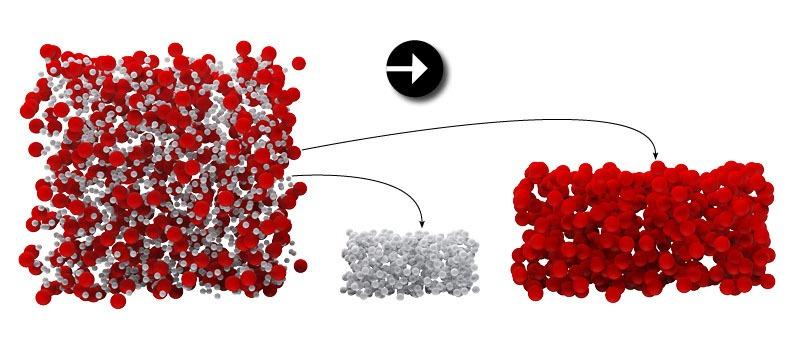
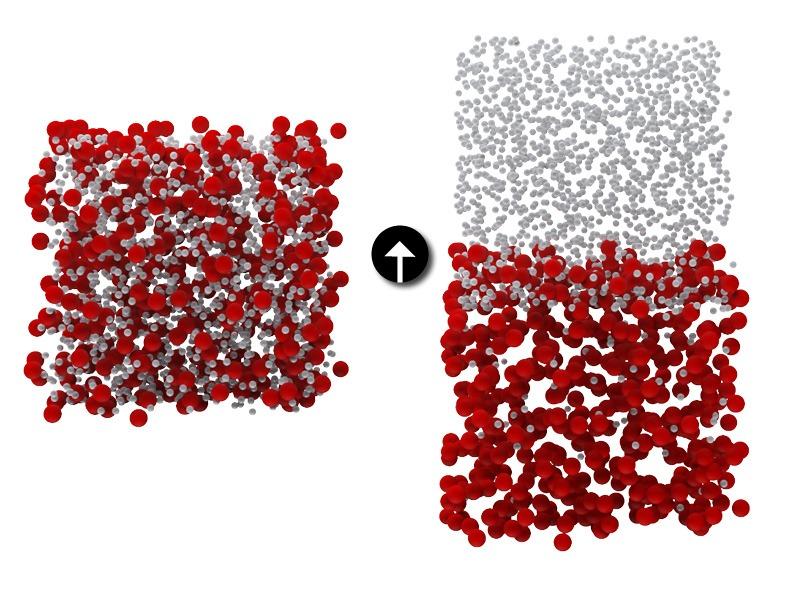
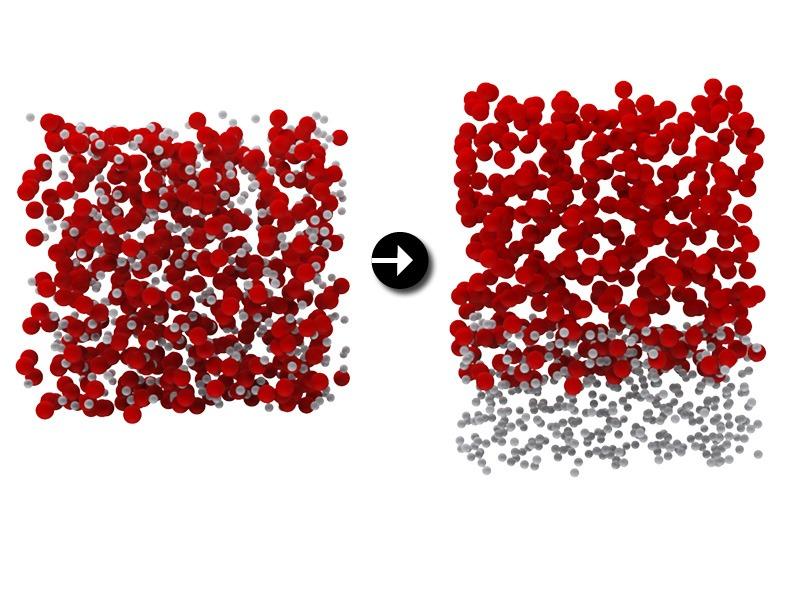
Segregation by elutriation occurs when a liquid or gas flows through a bed of particles of different sizes. The smaller particles are absorbed and displaced by the current. Only the larger powder particles remain in the bed.
Segregation through percolation can occur if there is a large difference in a powder mixture between finer particles and coarser components. When such a powder mixture is exposed to vibrations, the smaller particles move downwards due to the influence of the vibration in combination with the force of gravity. At the bottom of the powder mixture, the small powder particles occupy a position between the coarser components. Only the coarser ingredients are left at the top of the powder mixture.
Derived from these three basic mechanisms of segregation, a number of cases can be taken as examples:
- Segregation in pneumatic transport,
- Segregation in the cooling or drying of powder mixtures,
- Segregation in the dumping of powders.
When a powder mixture is transported pneumatically, the particles acquire a speed at the start. Due to differences in resistance experienced by the different types of particles, but also due to differences in density, shape and size of the particles, each type of particle will follow a different path in pneumatic transport. This can cause segregation during a pneumatic transport. In pneumatic transport, segregation will therefore mainly depend on elutriation and the ball path principle.
The powder mixture can be cooled or dried by storing it in a layer and supplying cool or warm air from underneath the mixture. The smaller particles can be absorbed by the flow of the air and moved to the top of the layer. The larger powder particles are less likely to be taken along with this air flow and remain at the bottom of the layer of the bed. The segregation here is based on the principle of elutriation
If a powder mixture is dumped from above into a silo or bunker, a powder mountain is created. If a beater is used on the silo to better discharge the powder, the principle of percolation will cause the smaller particles to move to the bottom of the silo. The larger parts will end up on the surface of the mountain.

Name: Juul Jenneskens
Advisor
Please feel free to contact me if you have any questions about this subject. My team of colleagues and I are ready to answer!
Get in touch with Juul Jenneskens 077 467 3555 powtech@dinnissen.nl
Do you prefer to request a consultation directly?
